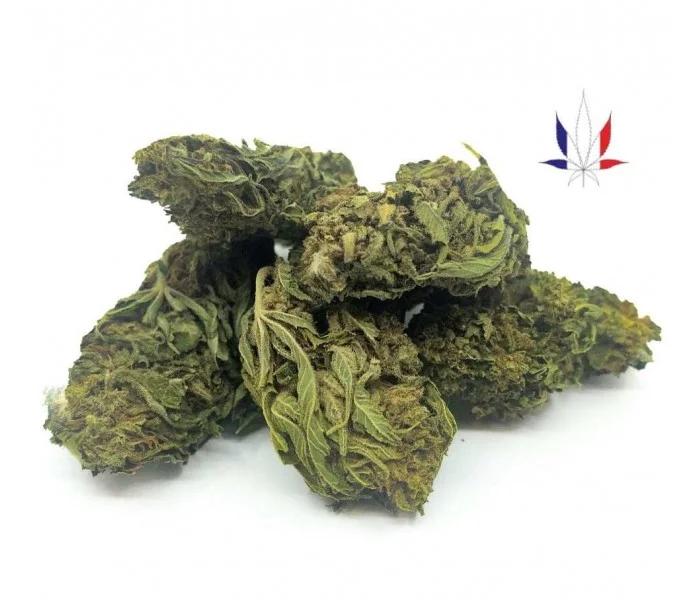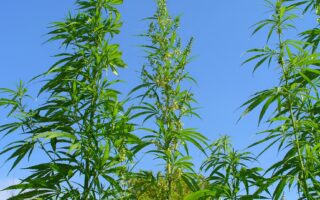In the ever-evolving landscape of cannabis culture, one question lingers in the minds of many: “Is weed the same as marijuana?” As conversations around this multifaceted plant gain traction, understanding its nuances becomes essential. While the terms are often used interchangeably, delving deeper reveals a tapestry rich with botanical classifications, historical context, and shifting societal perceptions. In this article, we embark on a journey to untangle the threads of terminology, explore the distinctions and connections between weed and marijuana, and shed light on how language shapes our understanding of this remarkable plant. Join us as we navigate the intricate world of cannabis, illuminating the facts with clarity and curiosity.
Table of Contents
- Understanding the Distinction Between Weed and Marijuana
- Exploring the Cultural and Legal Perspectives on Cannabis
- Health Implications: What Science Says About Cannabis Usage
- Navigating the Market: Tips for Responsible Consumption and Purchase
- Q&A
- Concluding Remarks
Understanding the Distinction Between Weed and Marijuana
At first glance, the terms “weed” and “marijuana” may seem interchangeable, but they encapsulate different nuances in the cannabis landscape. Marijuana generally refers to the parts of the cannabis plant that are cultivated for psychoactive effects, often containing significant amounts of THC (tetrahydrocannabinol), the compound responsible for the plant’s intoxicating properties. In contrast, weed is a more casual slang term that can refer to any form of cannabis, whether psychoactive or not. This can include hemp, which is low in THC and often used for its fibers, seeds, and oil without producing the high associated with marijuana consumption.
The diversity of cannabis makes it essential to recognize these distinctions for both legal and recreational purposes. A few points to consider include:
- Hemp vs. Marijuana: Hemp contains less than 0.3% THC, while marijuana typically exceeds this threshold.
- Usage: Marijuana is often used for recreational and medicinal purposes, while hemp can be utilized for industrial products.
- Legal Status: The legality of marijuana can vary widely across regions, whereas hemp has gained broader legal acceptance.
Furthermore, cannabis plants come in various strains, each with unique chemical profiles. A simple overview of the two categories might look as follows:
| Characteristic | Weed (Marijuana) | Hemp |
|---|---|---|
| THC Content | High | Low |
| Primary Use | Recreational, medicinal | Industrial, nutritional |
| Legality | Varies by region | More widely accepted |
Exploring the Cultural and Legal Perspectives on Cannabis
As cannabis continues to weave its way through the fabric of contemporary society, understanding its implications involves examining both cultural attitudes and legal frameworks. Many cultures have long revered cannabis for its medicinal properties and as a catalyst for social interaction, celebrating its use in rituals and wellness practices. This multifaceted perspective leads to various interpretations of the substance, often influenced by historical contexts and socio-political climates. In some regions, cannabis is a symbol of rebellion and autonomy, while in others, it’s associated with community bonding and therapeutic benefits.
Legally, the status of cannabis is fluctuating worldwide, resulting in a patchwork of regulations that reflect prevailing cultural sentiments. A few key factors that contribute to these divergent legal views include:
- Public Health Concerns: Debates around safety, addiction, and the implications for mental health.
- Economic Opportunities: Job creation, tax revenue, and the burgeoning cannabis industry.
- Social Justice: The impacts of historical prohibition, especially on marginalized communities.
To illustrate the variations in cannabis laws globally, the following table showcases the status of cannabis in select countries:
| Country | Cannabis Legal Status | Notes |
|---|---|---|
| Canada | Legal for recreational use | First G7 country to fully legalize |
| Netherlands | Decriminalized; tolerated use | Coffee shops allow limited sales |
| United States | State-regulated; mixed legality | Varies widely from state to state |
| Thailand | Legal for medical use | Recently liberalized laws |
Health Implications: What Science Says About Cannabis Usage
Emerging research into cannabis reveals a complex interplay between its therapeutic potential and potential health risks. Cannabis contains cannabinoids, such as THC and CBD, which interact with the body’s endocannabinoid system, affecting various physiological processes. Studies indicate that it can be beneficial for managing chronic pain, reducing anxiety, and alleviating symptoms related to conditions like epilepsy and multiple sclerosis. However, there are also important considerations regarding its use, especially among younger populations, where early exposure has been linked to cognitive impairments and an increased risk of mental health disorders. It’s crucial for users to consult healthcare professionals and consider their individual circumstances before embarking on cannabis use.
While the medical benefits of cannabis are significant, misuse and overconsumption can lead to adverse effects. Key health implications include:
- Potential for addiction: Regular use may lead to dependence in some individuals.
- Cognitive impact: Heavy use can impair short-term memory and learning.
- Cardiovascular effects: Increased heart rate and potential blood pressure fluctuations.
- Respiratory issues: Inhalation of smoke can affect lung health similarly to tobacco.
To provide a clearer overview, consider the following table outlining the benefits versus the risks associated with cannabis usage:
| Benefits | Risks |
|---|---|
| Chronic pain relief | Potential for addiction |
| Reduction in anxiety symptoms | Cognitive impairments |
| Muscle spasm relief | Respiratory issues from smoking |
Navigating the Market: Tips for Responsible Consumption and Purchase
The world of cannabis can be overwhelming, especially with the myriad of products available today. Understanding the distinctions between different strains and types is essential for making informed choices. Look for labels that clearly indicate the THC and CBD content, as well as any certifications for purity or sustainability. Always consult with knowledgeable staff at dispensaries, as they can offer insights tailored to your needs and preferences. Before purchasing, consider your personal effects, such as tolerance levels and intended use, ensuring a more mindful experience.
Research is your ally when navigating cannabis products. Join local online communities or forums to exchange information and reviews on various brands. It’s beneficial to develop a checklist for responsible consumption, which may include:
- Checking for lab tests to confirm the product’s quality.
- Understanding local laws to ensure compliance and safety.
- Supporting local dispensaries that prioritize sustainable practices.
To visualize the differences among strains and their effects, consider utilizing a simple table like the one below:
| Strain Type | Common Effects | Ideal Use |
|---|---|---|
| Sativa | Uplifting, Energetic | Daytime Use |
| Indica | Relaxing, Sleepy | Nighttime Use |
| Hybrid | Balanced Effects | Versatile Use |
Q&A
Q&A: Is Weed the Same as Marijuana?
Q1: What’s the basic difference between weed and marijuana?
A1: At its core, “weed” and “marijuana” often refer to the same thing, but they can carry different connotations. “Marijuana” is the formal term for the Cannabis sativa plant, especially when discussing its use for medical or recreational purposes. “Weed,” on the other hand, is more of a colloquial term often used in casual conversation. Think of ”marijuana” as the straight-laced name you’d find in a medical textbook, while “weed” is the slangy friend you’d laugh with over a joint.
Q2: Are there different types of marijuana, and how does that relate to weed?
A2: Absolutely! Marijuana comes in various strains, each with unique effects, flavors, and THC/CBD content. While “weed” is a catch-all term that encompasses these varieties, when people talk about different types of marijuana—like Indica, Sativa, and hybrids—they are discussing specific classifications within the larger weed family. So, all marijuana is weed, but not all weed is created equal!
Q3: Can I use weed in place of marijuana in legal documents?
A3: Officially, no. In legal contexts or medical discussions, it’s best to stick with “marijuana” to avoid any confusion. Although “weed” might roll off the tongue more easily, law officials, doctors, and researchers typically prefer the precise terminology. It’s like dressing up for an important occasion; “weed” might be a comfy pair of jeans, but “marijuana” is the well-tailored suit.
Q4: Is there a difference in perception between weed and marijuana?
A4: Yes, indeed! The term “weed” often carries a more relaxed and recreational vibe, while “marijuana” can evoke a more serious tone, especially in discussions around health, legal status, and research. Some people may associate “weed” with casual use and a carefree lifestyle, whereas “marijuana” might be viewed through a lens that includes its benefits, risks, and policy implications.
Q5: What other terms should I be aware of related to weed and marijuana?
A5: You’re diving into a whole semantic sea! Besides “marijuana” and ”weed,” you’ll often hear “cannabis,” which is the scientific name for the plant. Then there are terms like “hemp,” which specifically refers to cannabis plants with low THC levels, primarily used for industrial purposes. Each term serves its purpose, and while they all stem from the same family tree, understanding their distinctions can enhance your cannabis vocabulary.
Q6: In a nutshell, can you sum up the relationship between weed and marijuana?
A6: Certainly! The relationship between weed and marijuana is akin to that of a category and its examples. All marijuana is weed, but the term “weed” embraces a broader, more casual understanding that may include other forms of cannabis use. Understanding this nuanced relationship can help you navigate conversations and contexts surrounding one of the most discussed plants in modern culture.
Concluding Remarks
In the grand tapestry of language and culture, the terms “weed” and “marijuana” intertwine, each thread adding to the complex narrative of this multifaceted plant. Whether you refer to it as weed, pot, cannabis, or marijuana, the substance evokes a myriad of perceptions, emotions, and legal considerations.
As we conclude our exploration, it’s clear that understanding these terms requires not only a grasp of botanical definitions but also an appreciation for their social and historical contexts. Whether you’re a casual user, a seasoned connoisseur, or simply curious, the terminology surrounding marijuana is as diverse as its applications and effects.
Ultimately, the distinction—or lack thereof—between weed and marijuana serves as a reminder of the evolving conversation around this plant. With ongoing research, shifting societal attitudes, and changing laws, the journey is far from over. Just as the cannabis community continues to advocate for informed dialogue and education, so too should our exploration of its many names. After all, in a world where language shapes perception, understanding the words we choose can lead to a more nuanced appreciation of what lies beneath the surface.


